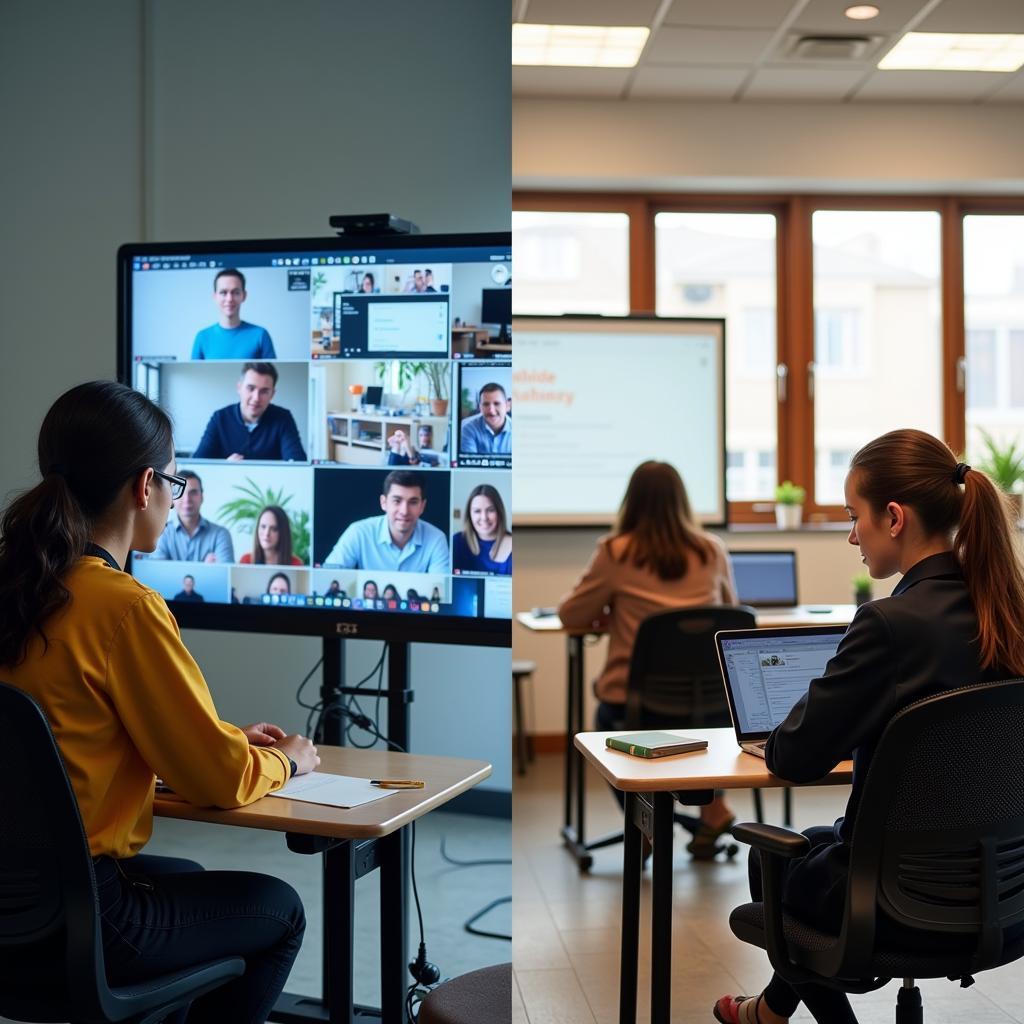The intersection of virtual learning and traditional education systems has become an increasingly common topic in IELTS Writing Task 2 examinations. Based on analysis of past exam papers and the role of technology in modern education, this theme appears in approximately 15-20% of education-related questions, making it crucial for IELTS candidates to be well-prepared.

Analyzing the Task Question
Some people believe that virtual learning will completely replace traditional classroom education in the future. To what extent do you agree or disagree with this statement?
This question requires candidates to express their opinion about the future of education, specifically addressing the potential replacement of traditional classroom learning by virtual education platforms. The key aspects to consider are:
- The advantages and limitations of virtual learning
- The irreplaceable elements of traditional classroom education
- The likely balance between both systems in the future
Band 8 Sample Essay
The influence of online education on lifelong learning has sparked considerable debate about the future of traditional education. While virtual learning has revolutionized educational accessibility, I strongly disagree with the notion that it will entirely replace conventional classroom instruction.
Virtual learning undeniably offers numerous advantages. Its flexibility allows students to learn at their own pace and access educational resources from anywhere, breaking down geographical barriers. Furthermore, digital platforms provide innovative tools for interactive learning and immediate feedback, enhancing the educational experience through technological integration.
However, traditional classroom education possesses irreplaceable qualities that impact of online education on social interactions cannot fully replicate. Face-to-face interaction between teachers and students facilitates immediate clarification of doubts and enables educators to gauge understanding through non-verbal cues. Additionally, the classroom environment fosters crucial social skills, teamwork, and peer-to-peer learning that are essential for holistic development.
Looking ahead, the most likely scenario is a hybrid model that combines the best aspects of both systems. While virtual learning will continue to expand and evolve, it will complement rather than replace traditional education. This balanced approach would maximize learning outcomes by utilizing technological advantages while preserving the invaluable human elements of conventional teaching.
In conclusion, although virtual learning will play an increasingly significant role in education, it is unlikely to completely supersede traditional classroom instruction. The future of education lies in finding the optimal integration of both methods to create a more effective and comprehensive learning experience.
Band 6.5 Sample Essay
I disagree that virtual learning will completely replace traditional classroom education because both systems have their own benefits and drawbacks.
Virtual learning has many good points. Students can study from home and save time and money on transportation. They can also watch recorded lectures many times if they don’t understand something. Many online courses are cheaper than traditional schools, so more people can get education.
However, traditional classrooms are still important. Teachers can see if students are paying attention and help them immediately when they have problems. Students also make friends and learn social skills in real classrooms. Some subjects like science experiments and physical education need face-to-face teaching.
How automation is transforming the education sector shows that technology is changing education, but it cannot replace everything. In the future, schools will probably use both virtual and traditional methods. This way, students can get the benefits of both systems.
In conclusion, while virtual learning is becoming more popular, it will not completely replace traditional education. The best solution is to combine both methods to give students the best learning experience.
Key Vocabulary
- virtual learning (n.) /ˈvɜːrtʃuəl ˈlɜːrnɪŋ/ – education that takes place through digital platforms
- holistic development (n.) /həʊˈlɪstɪk dɪˈveləpmənt/ – complete development of a person
- irreplaceable (adj.) /ˌɪrɪˈpleɪsəbl/ – impossible to replace
- hybrid model (n.) /ˈhaɪbrɪd ˈmɒdl/ – combination of different systems or approaches
- peer-to-peer learning (n.) /pɪə tuː pɪə ˈlɜːnɪŋ/ – learning from and with other students
- integration (n.) /ˌɪntɪˈɡreɪʃn/ – the process of combining different things
- supersede (v.) /ˌsuːpəˈsiːd/ – replace something with something newer
Practice Suggestion
Try writing your own essay on this related topic:
“Some people believe that online courses should be made mandatory in all universities. Discuss the advantages and disadvantages of this approach.”
Share your practice essays in the comments section for feedback and discussion with other learners.